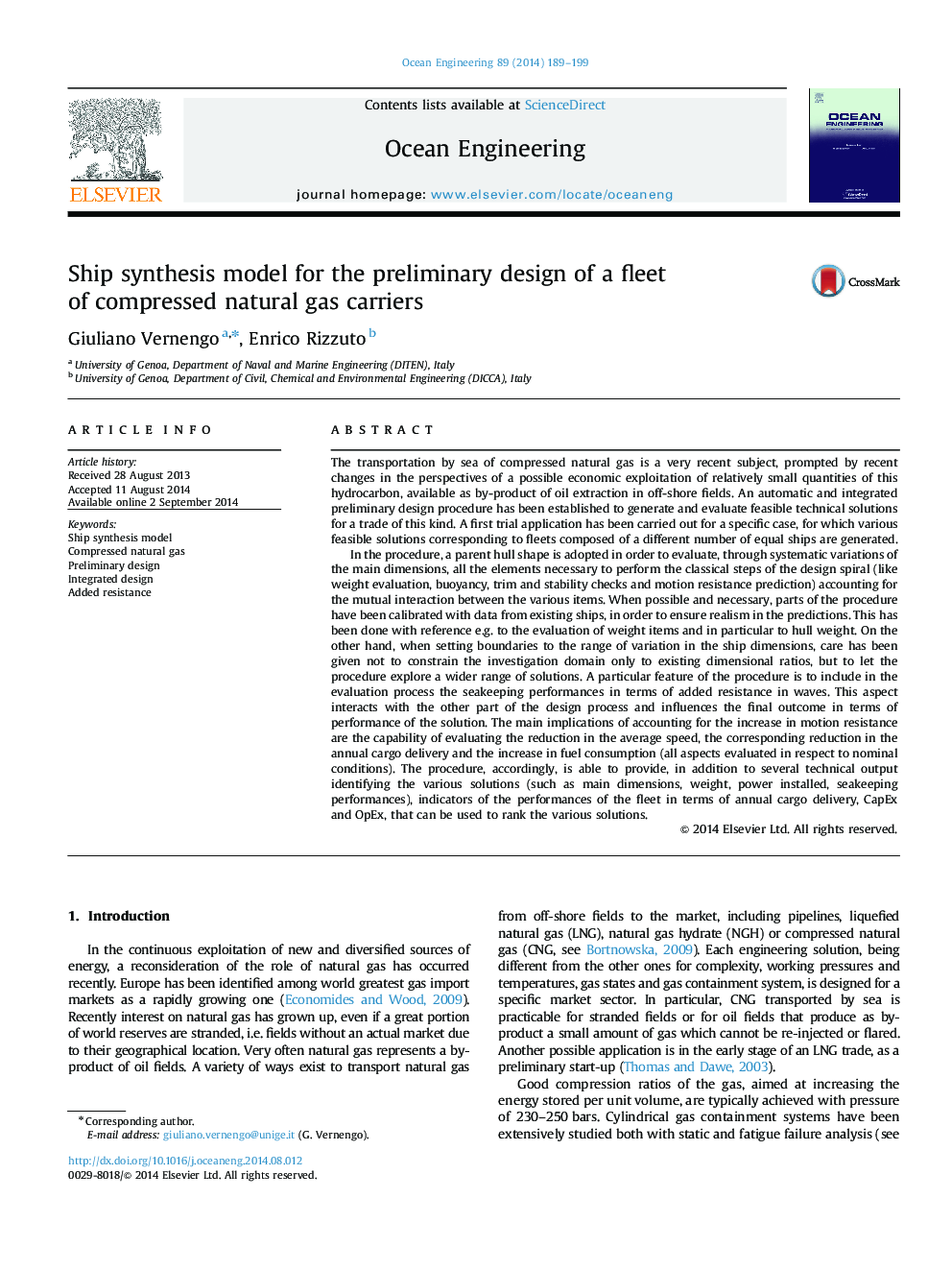| Article ID | Journal | Published Year | Pages | File Type |
|---|---|---|---|---|
| 8066301 | Ocean Engineering | 2014 | 11 Pages |
Abstract
In the procedure, a parent hull shape is adopted in order to evaluate, through systematic variations of the main dimensions, all the elements necessary to perform the classical steps of the design spiral (like weight evaluation, buoyancy, trim and stability checks and motion resistance prediction) accounting for the mutual interaction between the various items. When possible and necessary, parts of the procedure have been calibrated with data from existing ships, in order to ensure realism in the predictions. This has been done with reference e.g. to the evaluation of weight items and in particular to hull weight. On the other hand, when setting boundaries to the range of variation in the ship dimensions, care has been given not to constrain the investigation domain only to existing dimensional ratios, but to let the procedure explore a wider range of solutions. A particular feature of the procedure is to include in the evaluation process the seakeeping performances in terms of added resistance in waves. This aspect interacts with the other part of the design process and influences the final outcome in terms of performance of the solution. The main implications of accounting for the increase in motion resistance are the capability of evaluating the reduction in the average speed, the corresponding reduction in the annual cargo delivery and the increase in fuel consumption (all aspects evaluated in respect to nominal conditions). The procedure, accordingly, is able to provide, in addition to several technical output identifying the various solutions (such as main dimensions, weight, power installed, seakeeping performances), indicators of the performances of the fleet in terms of annual cargo delivery, CapEx and OpEx, that can be used to rank the various solutions.
Related Topics
Physical Sciences and Engineering
Engineering
Ocean Engineering
Authors
Giuliano Vernengo, Enrico Rizzuto,
